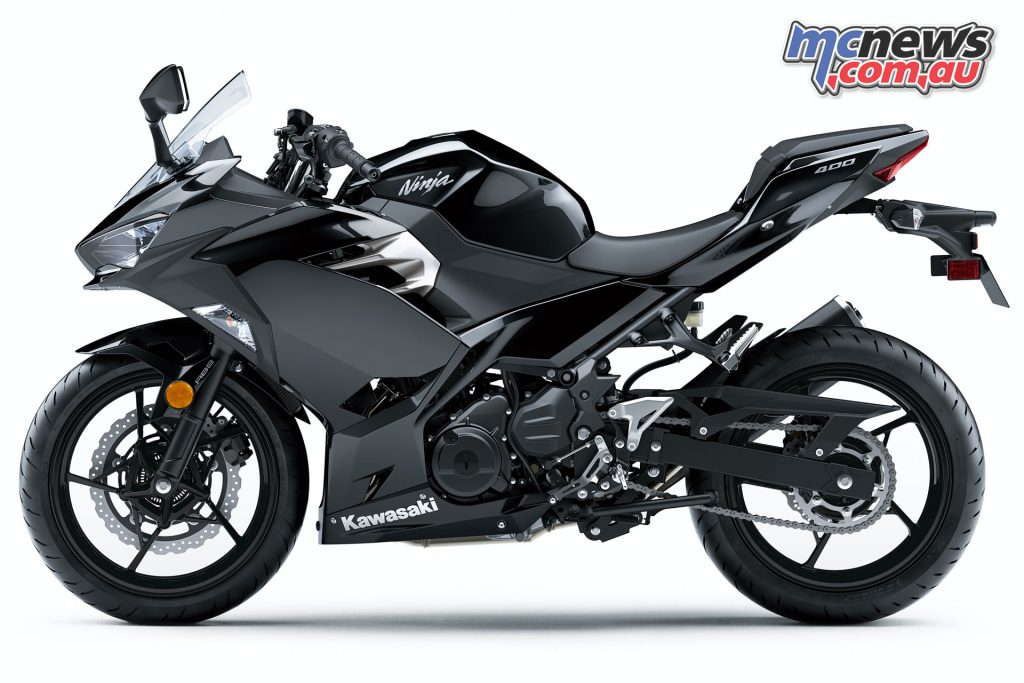2018 Kawasaki Ninja 400
10 more horsepower – less weight – more thrills
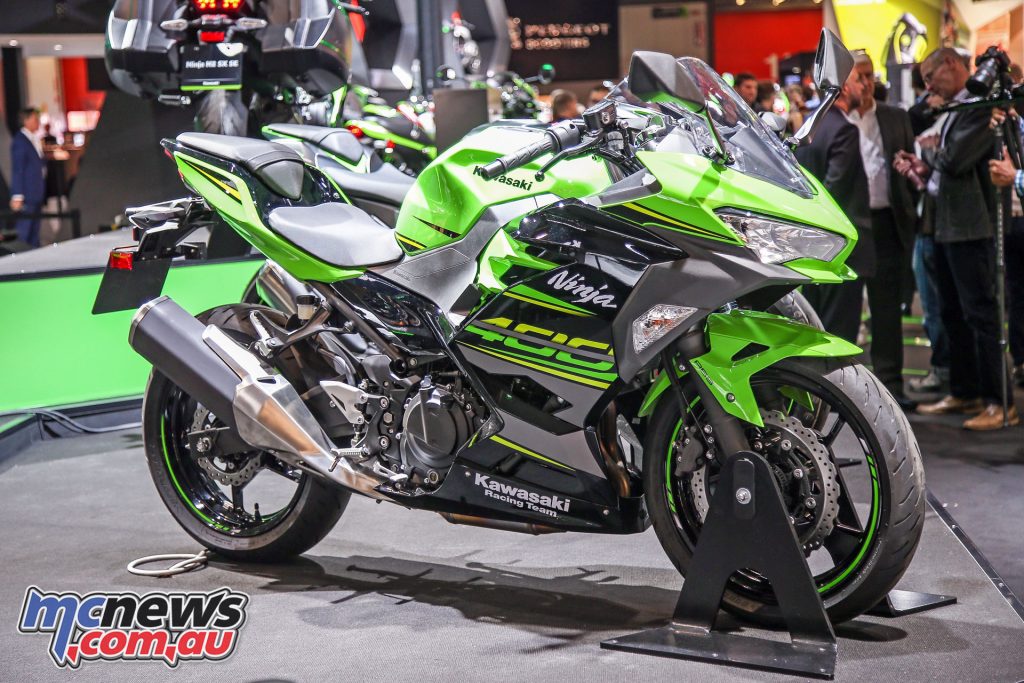
Kawasaki have announced a Ninja 400, with the model set to replace the Ninja 300, offering almost 20 per cent more power which in the new bike now amounts to 45 horsepower, along with lighter weight and slipper clutch.
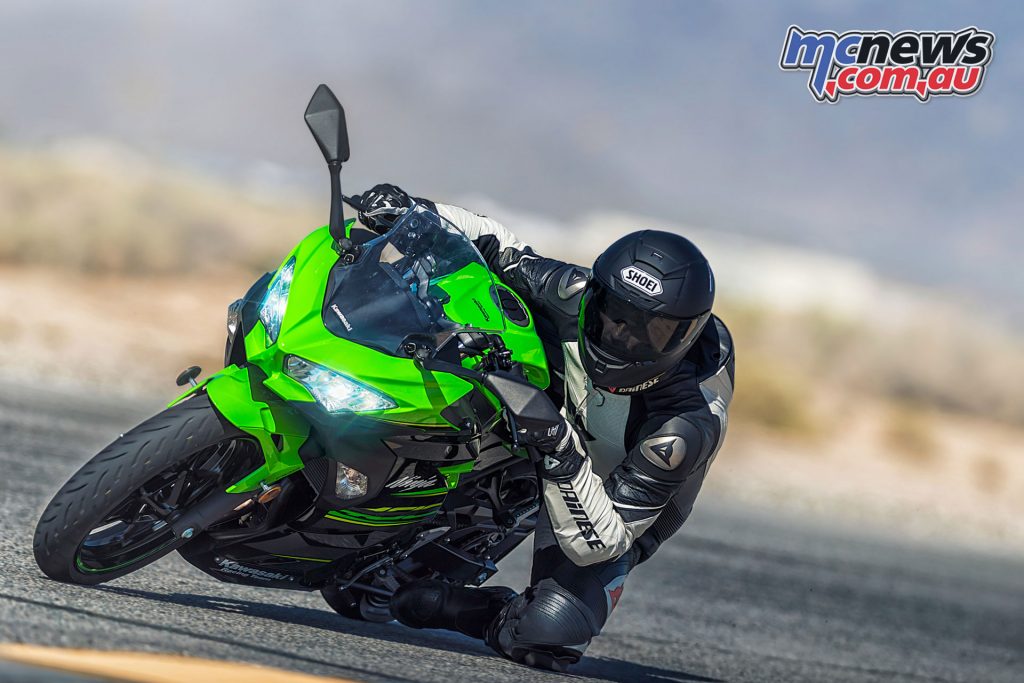
Kawasaki are claiming much of the performance gained is largely credited to the new downdraft intake, which is accompanied by a larger airbox offering increased intake efficiency.
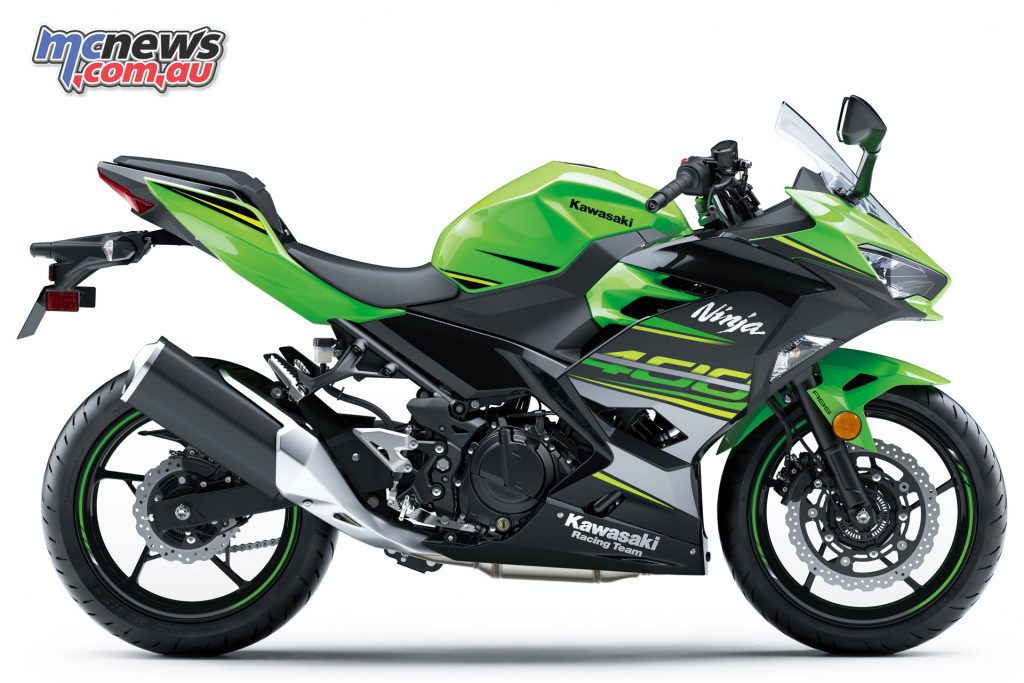
Designed from scratch, the Ninja 400 features numerous weight reduction efforts to keep engine weight to a minimum – despite a larger displacement. A clean design trimmed of any unnecessary items and a revamped layout enables a slim engine and a cooling system with minimised external piping. A cover for the radiator fan directs engine heat away from the rider.
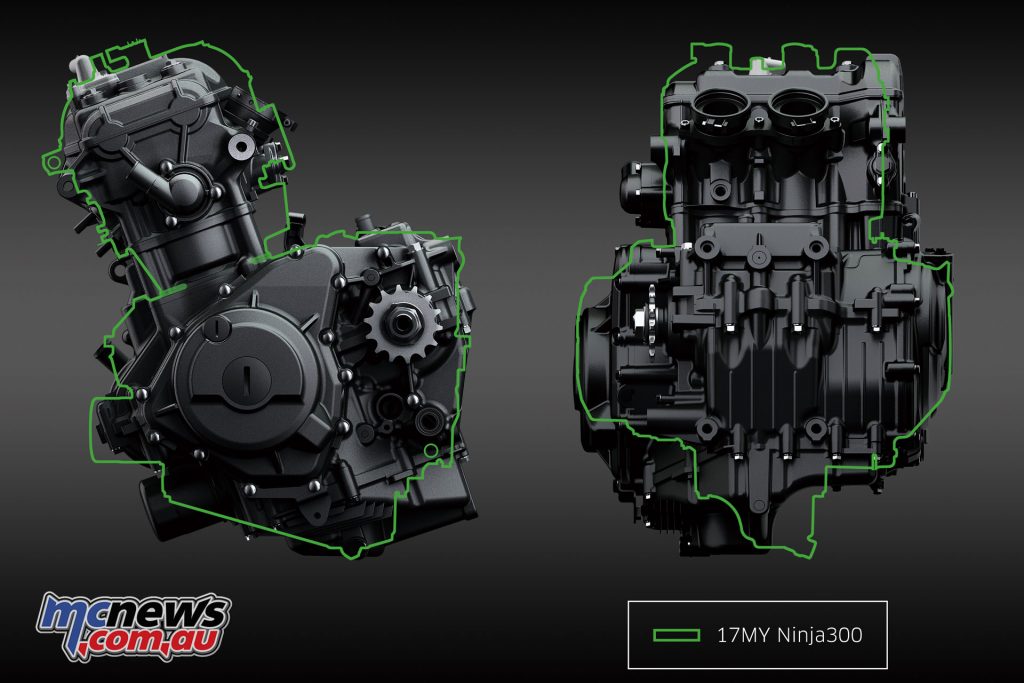
A new Assist & Slipper Clutch allows for a more compact clutch (φ139 mm >> φ125 mm) with less rigid operating plates, offering a 20 per cent lighter lever pull and with a wider engagement range.
The Ninja 400 features a trellis frame. The engine is rigidly-mounted and used as a stressed member. The new frame design contributes significantly to the bike’s low kerb mass. Allowing the swingarm to be affixed to the rear of the engine contributes to stability and helps with weight savings.
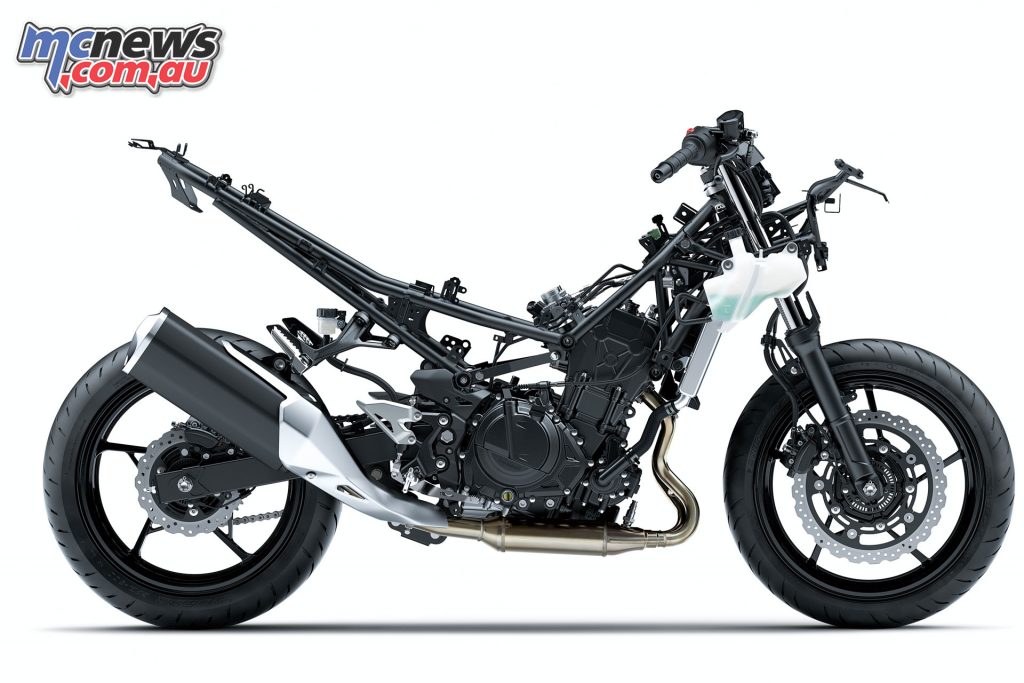
The new chassis has a supersport-style short-wheelbase/long-swingarm design, complemented by a steep caster angle that delivers light, natural handling.
The lightweight design of the new engine and frame, plus extensive efforts to minimise weight result in a kerb mass of only 168kg – weight on par with single-cylinder models.
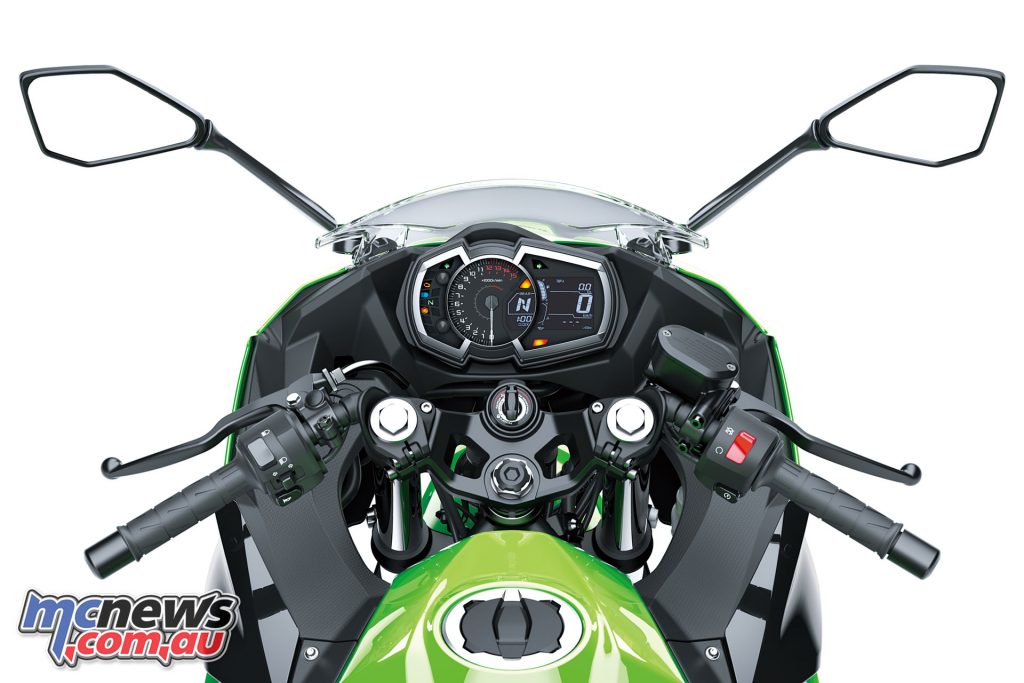
More rigid 41mm telescopic front forks also deliver better suspension action, ensuring the front wheel feels really planted, direction changes are made easily and overall the suspension offers the plushness of a larger displacement bike.
A large semi-floating brake disc measuring 310mm and a rigid new front brake master cylinder along with the latest ABS unit from Nissin.
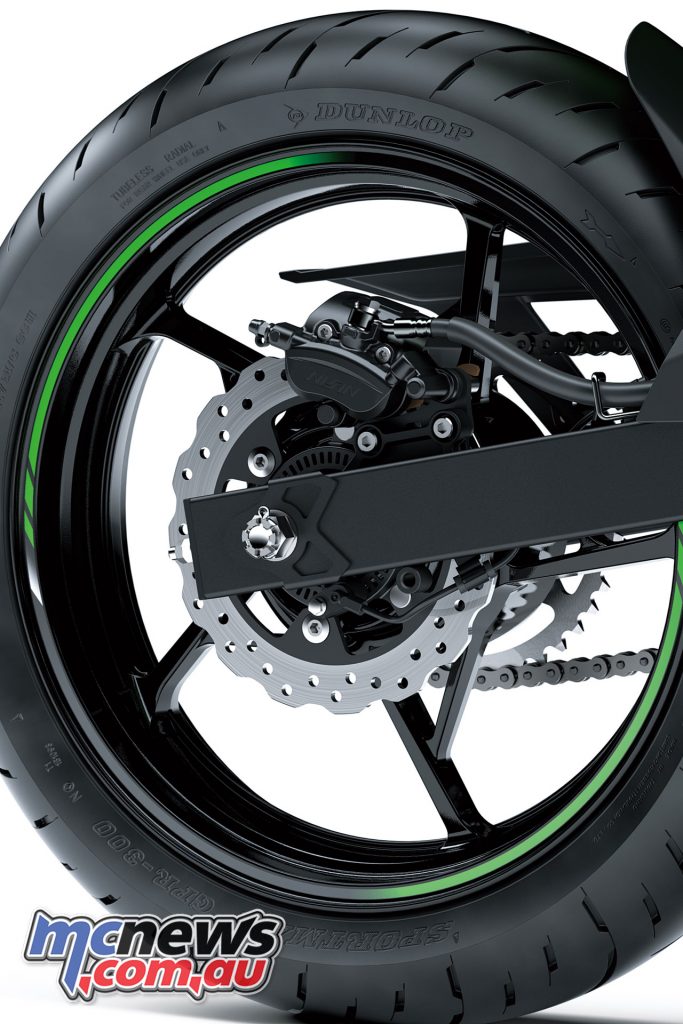
A relaxed rider triangle accommodates a wide range of rider sizes and riding situations. The elevated handlebar position and slightly foot-forward footpeg position put the rider in a position to control the bike while also offering rider comfort.
While seat height is 785mm (when radial tyres are fitted), the slim design of both the seat (30mm narrower) and the rear of the engine give riders an unobstructed line for their feet to reach the ground.
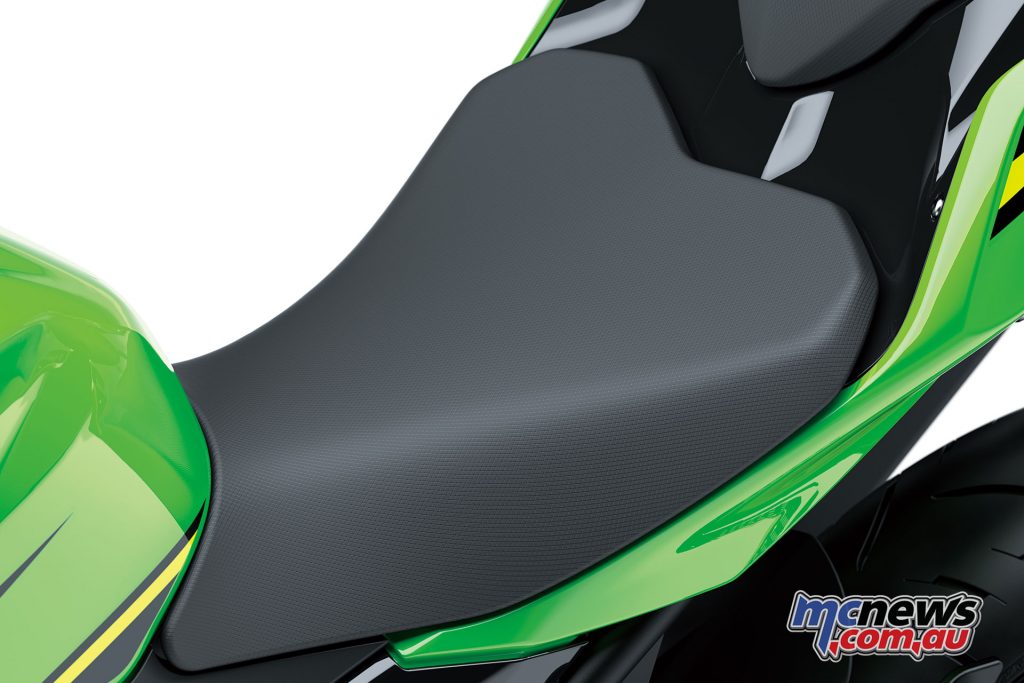
Rider and passenger seats with thick cushioning and low-rebound urethane contribute to ride comfort. The Ninja 400’s larger-volume bodywork offers better wind protection, further contributing to ride comfort.
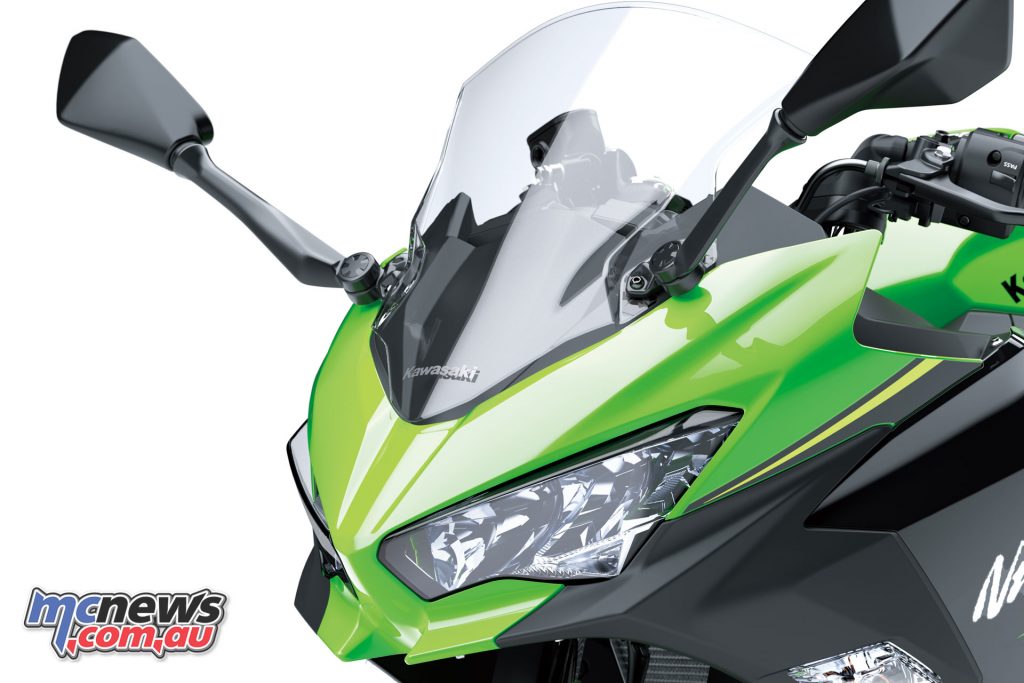
Influence from the Ninja H2 is evident in the chin-spoilers below the front cowl and in the design of the tail cowl, while twin LED Headlamps in addition to contributing to the Ninja 400’s sharper looks, are highly visible and offer significantly increased brightness.
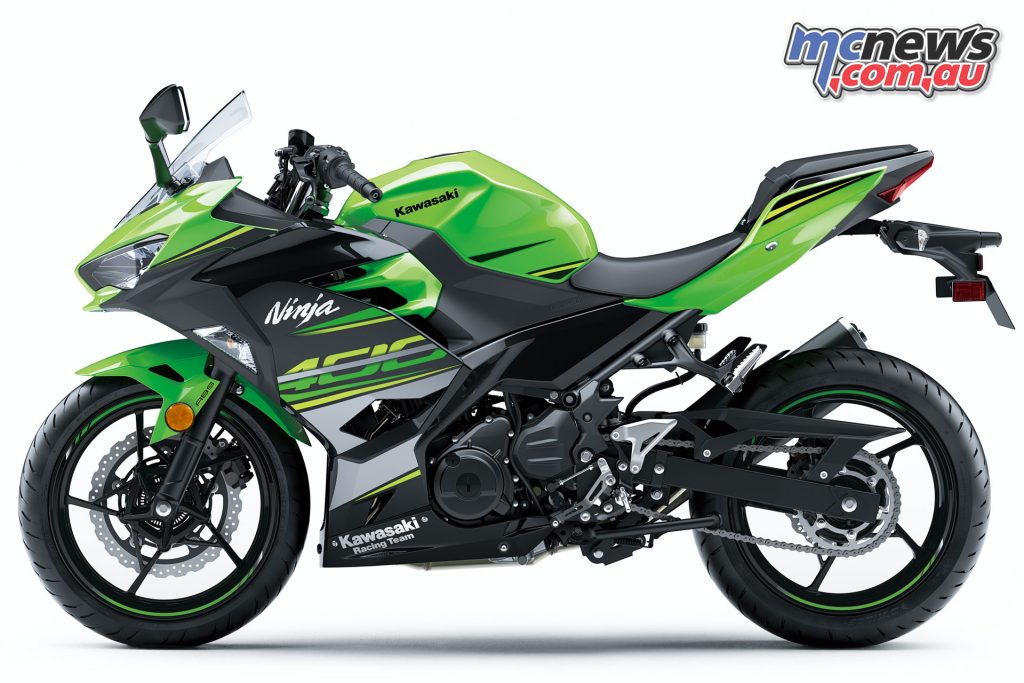
The Ninja 400 is equipped with the same instrument cluster as the new Ninja 650 and features a large analogue tachometer flanked by warning lamps on one side, along with a gear position indicator and multi-function LCD screen on the other.
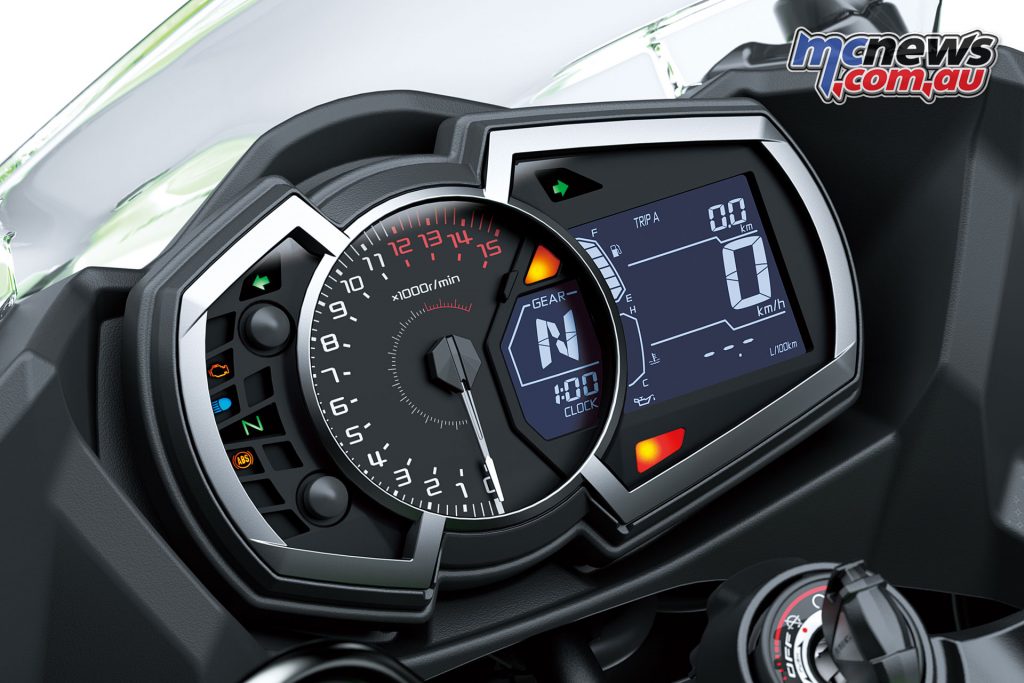
The 2018 Ninja 400 will be available in Metallic Spark Black and Lime Green/Ebony (KRT Edition).
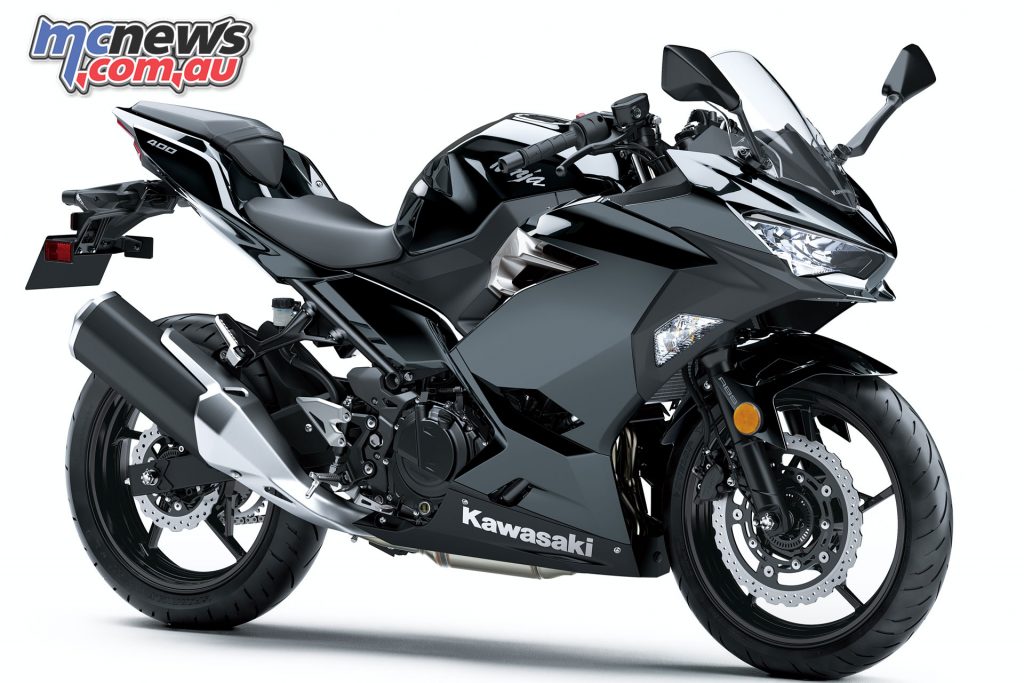
2018 Kawasaki Ninja 400 Specifications
- Engine Type – Liquid-cooled, 4-stroke Parallel Twin
- Displacement – 399cc
- Bore and Stroke – 70 x 51.8mm
- Compression ratio – 11.5:1
- Valve system – DOHC, 8 valves
- Fuel system – Fuel injection, dual 32mm throttle bodies
- Ignition – Digital
- Starting – Electric
- Lubrication – Forced lubrication, wet sump
- Transmission – 6-speed, return
- Final drive – Chain
- Clutch – Wet multi-disc, manual
- Maximum power – 33.4kW[45 hp]@10,000rpm
- Maximum torque – 38Nm@8000rpm
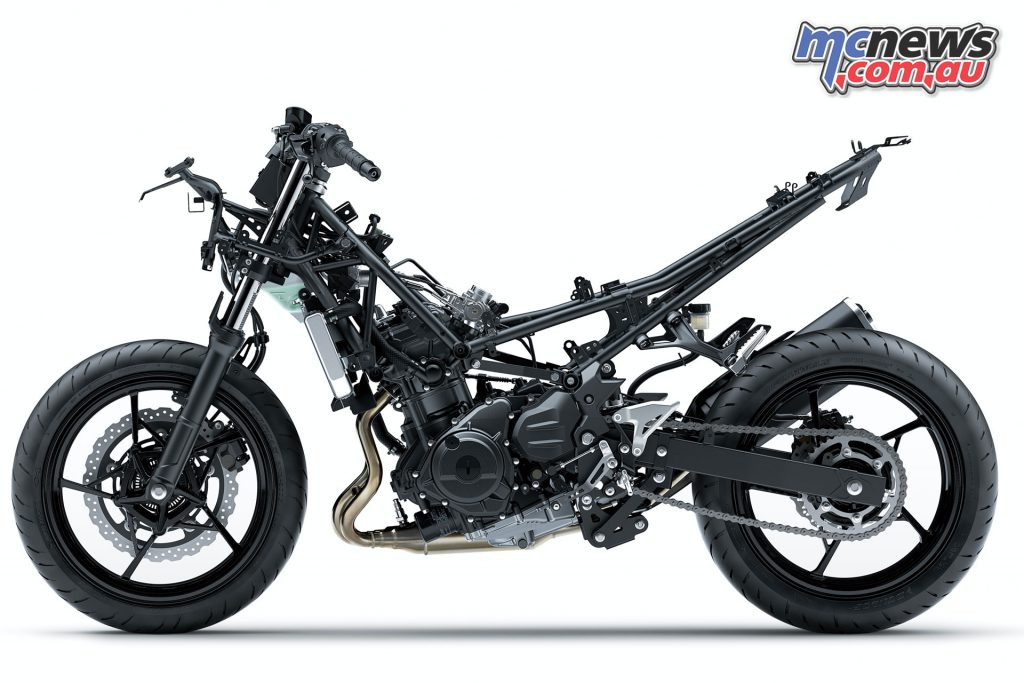
- Frame – Trellis, high-tensile steel
- Wheel travel – 120 mm/130 mm
- Tyres – 110/70R17 M/C 54H, 150/60R17 M/C 66H
- Caster (rake) – 24.7°
- Trail – 92 mm
- Steering angle (left/right) – 35°
- Suspension – 41mm telescopic fork, Bottom-Link Uni-Trak, gas-charged shock with adjustable preload
- Brakes – Single semi-floating 310mm petal disc, single balanced actuation dual-piston caliper, single 220mm rear petal disc, dual-piston caliper
- DIMENSIONS
- Overall length – 1,990 mm
- Overall width – 710 mm
- Overall height – 1,120 mm
- Wheelbase – 1,370 mm
- Ground clearance – 140 mm
- Seat height – 785 mm
- Kerb mass – 168 kg
- Fuel capacity – 14 litres
